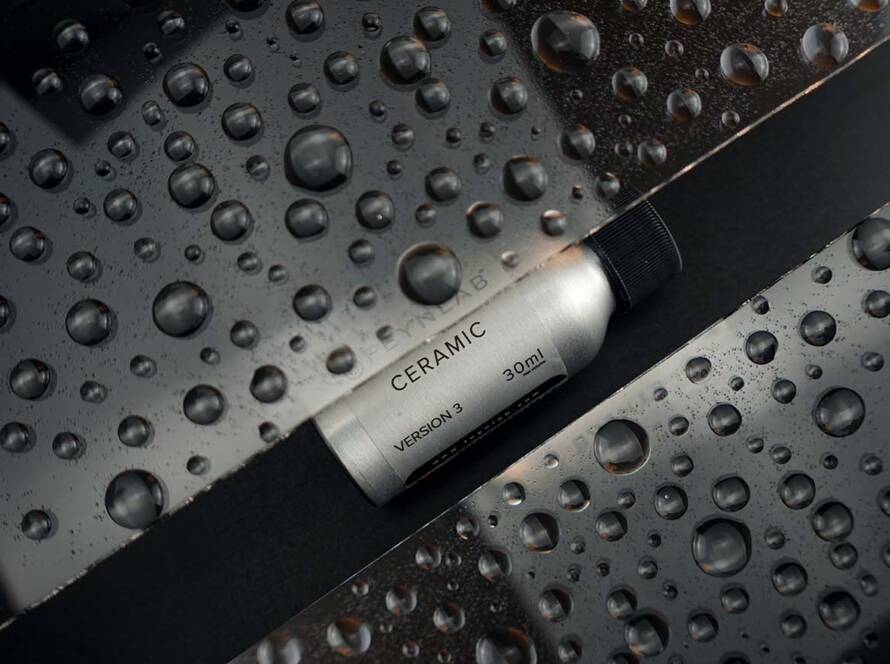Automotive ceramic coatings are celebrated for their ability to protect car exteriors while providing a sleek, glossy finish. These coatings, made from advanced polymers and ceramics, are increasingly popular in the world of green automotive technologies. However, as environmental consciousness rises, it’s essential to evaluate the environmental impact of car coatings like ceramic options. This article delves into the ecological implications of automotive ceramic coatings, their sustainability, and the long-term effects they have on the environment.
Ecological Implications of Automotive Ceramic Coatings
Automotive ceramic coatings offer a durable, hydrophobic shield that repels dirt, UV rays, and water. This superior protection undoubtedly benefits car owners, but what are the ecological costs?
-
-
Raw Material Extraction:
- Ceramic coatings often contain silicon dioxide (SiO2) and titanium dioxide (TiO2), both derived from natural minerals. While these materials are considered non-toxic, their extraction and refinement require significant energy, leading to greenhouse gas emissions and habitat disruption.
-
-
-
Production and Manufacturing:
- Producing ceramic coatings involves industrial processes that may emit volatile organic compounds (VOCs). While many manufacturers are adopting low-VOC formulations, the overall environmental impact of car coatings remains tied to these emissions.
-
-
Chemical Residue:
- Improper application or disposal of ceramic coating residues can lead to chemical pollution, potentially harming local ecosystems.
Sustainability of Ceramic Car Coatings
The sustainability of ceramic car coatings depends on their longevity and their role in reducing other maintenance-related environmental impacts.
Durability and Longevity
One of the primary benefits of automotive ceramic coatings is their extended lifespan:
- Longevity: Ceramic coatings can last 2–5 years or more with proper maintenance, far exceeding traditional waxing products that require frequent reapplication.
- Reduced Chemical Use: This durability minimizes the need for regular applications, decreasing the production, packaging, and waste associated with alternative products.
Water and Detergent Conservation
- Vehicles coated with ceramic layers are easier to clean, often requiring only water and minimal soap. This reduces water usage and limits the environmental impact of detergents entering wastewater systems.
Energy Efficiency:
- By maintaining a car’s aesthetic and protecting its exterior from degradation, ceramic coatings extend the vehicle’s life, reducing the frequency of repainting—a process that consumes significant energy and materials.
Environmental Benefits of Ceramic Coatings for Cars
Despite concerns, eco-friendly vehicle coatings like ceramic options offer tangible environmental advantages.
Minimized Maintenance Waste:
- Ceramic coatings replace the frequent waxing cycles of traditional car care products, leading to:
- Lower material consumption.
- Fewer empty containers are discarded as waste.
- Reduced transportation emissions for product distribution.
Enhanced Vehicle Longevity:
- By shielding the car from UV rays, oxidation, and minor abrasions, ceramic coatings preserve the vehicle’s appearance and structural integrity. This reduces the demand for repainting and touch-ups, both of which have their own environmental impacts.
Improved Aerodynamics:
- The hydrophobic properties of ceramic coatings can slightly improve a car’s aerodynamics by reducing surface resistance, contributing to fuel efficiency and lowering carbon emissions.
Long-Term Effects of Ceramic Coatings on the Environment
To fully understand the impact of ceramic coatings on car lifecycle and environment, their long-term ecological footprint must be examined.
Waste and Recycling Challenges
- The packaging and residues of ceramic coatings can contribute to landfill waste. While some brands are moving toward biodegradable or recyclable packaging, this is not yet industry-wide.
Chemical Persistence
- Some ceramic coating formulations may contain synthetic compounds that are slow to degrade. This can result in chemical persistence in natural environments if the products are improperly disposed of.
Balancing Benefits and Costs
- Although ceramic coatings reduce maintenance-related waste, their production still involves significant energy use. The challenge lies in maximizing their benefits while minimizing the environmental costs tied to their lifecycle.
Ceramic Coatings and Automotive Sustainability
Sustainable car protection goes hand in hand with reducing a vehicle’s overall environmental impact. Ceramic coatings play a role in advancing automotive sustainability, but their effectiveness depends on how they are integrated into broader green practices.
Lifecycle Contribution
- Ceramic coatings enhance the durability of a car’s paintwork, which:
- Reduces repainting needs.
- Extends the aesthetic lifespan of vehicles.
- Lowers the environmental impact associated with vehicle turnover and production.
Integration with Green Automotive Technologies
- As electric and hybrid vehicles rise in popularity, the demand for sustainable car protection grows. Ceramic coatings, when produced responsibly, complement the eco-friendly ethos of green vehicles by minimizing maintenance waste.
Supporting Circular Economies
- Some manufacturers are beginning to explore ways to make ceramic coatings recyclable or biodegradable, aligning with the principles of circular economies to reduce resource depletion.

Eco-Friendly Alternatives for Car Paint Protection
While ceramic coatings offer numerous benefits, exploring other eco-friendly vehicle coatings can help diversify sustainable solutions.
-
-
Plant-Based Coatings:
- These use bio-based polymers, reducing reliance on synthetic materials and lowering carbon footprints.
-
-
-
Water-Based Solutions:
- Free from VOCs, water-based coatings are safer for both users and the environment.
-
-
-
Silica-Free Options:
- Innovations in coating technology have led to formulations without silicon dioxide, offering a greener alternative.
-
-
Biodegradable Wax Alternatives:
- Though less durable than ceramic coatings, these options cater to those prioritizing short-term environmental impact.
By choosing coatings that minimize toxic ingredients and maximize environmental benefits, consumers can further reduce the environmental impact of car coatings.
Impact of Ceramic Coatings on Car Lifecycle and Environment
The ceramic coating lifespan directly influences the overall ecological footprint of a vehicle throughout its lifecycle.
Reduction in Vehicle Turnover
- Protecting the exterior reduces wear and tear, delaying the need for replacements and contributing to a lower environmental impact.
Maintenance Benefits
- Ceramic coatings simplify maintenance routines, requiring fewer resources over time. This ensures less energy, water, and chemical usage during a vehicle’s operational life.
Potential Drawbacks
- If improperly manufactured or disposed of, ceramic coatings can still contribute to pollution. Therefore, responsible usage and disposal are vital for reducing their impact on the environment.
A Balanced Approach to Sustainable Car Protection
The environmental impact of automotive ceramic coatings is a blend of benefits and challenges. On one hand, these coatings extend vehicle longevity, reduce maintenance waste, and support sustainable car protection. On the other, their production and disposal require careful consideration to minimize ecological harm.
As green automotive technologies continue to evolve, so too must the practices surrounding car paint protection and the environment. By choosing high-quality, eco-conscious products and exploring eco-friendly alternatives for car paint protection, consumers and manufacturers can ensure that vehicles remain protected without compromising the planet’s health.


